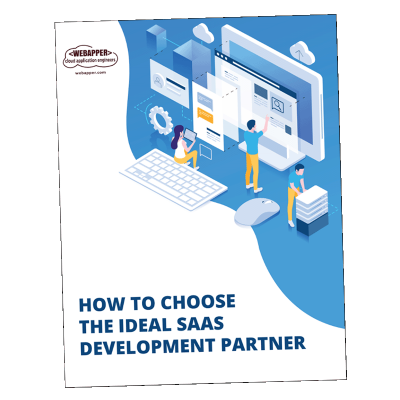How to Build Your SaaS Lead Qualification Checklist
You’re staring at a pipeline full of ‘hot’ leads, but your conversion rates are disappointing. How many times have your sales reps spent weeks nurturing a prospect, only to discover they don’t have budget or decision-making authority? We’ve seen this scenario play out many times. What’s the difference between high-performing SaaS sales teams and struggling ones? A solid lead qualification process. Let’s walk through building a SaaS lead qualification checklist that will save your team time and dramatically improve your close rates.
Why SaaS Companies Struggle with Leads
Many SaaS teams are winging it when it comes to qualifying SaaS leads. Each sales rep uses their own criteria, leading to wildly inconsistent results across the organization. With so many data points available (e.g., company size, tech stack, engagement scores), teams struggle to prioritize what matters most for closing deals.
The speed versus thoroughness dilemma exacerbates this problem. Pressure to move leads through the pipeline quickly often means skipping crucial qualification steps. And evolving buyer behavior makes traditional methods outdated. Today’s SaaS buyers complete 70% of their research before engaging sales, fundamentally changing how qualification should work.
Without effective qualification, sales teams waste half their time on SaaS leads that will never convert. Plus poorly qualified prospects often get deprioritized when they might actually be ready to buy with a better approach. Studies show that companies with proper lead qualification processes see 50% higher conversion rates.
A 7-Step Lead Framework
Building an effective lead qualification checklist requires a systematic approach that creates consistency across your sales organization. This framework improves efficiency and helps your team focus on prospects with the highest probability of closing. By the end of this process, you’ll have a standardized checklist that every team member can use to evaluate SaaS leads consistently. It’s about understanding exactly where each lead fits in your sales process and how you approach them strategically. The framework is flexible enough to work for any SaaS company, whether you’re targeting SMBs or enterprise clients.
Your 7-Step Implementation Guide
1. Define Your Ideal Customer Profile (ICP)
Start documenting your specific criteria for your ICP: company size, industry vertical, annual revenue, and growth stage. Include technographic data like current tools and tech stack compatibility that may affect your SaaS’s fit. Include behavioral indicators like content engagement patterns and website activity that signal buying intent.
2. Establish BANT+ Criteria
Go beyond traditional BANT ((Budget, Authority, Need, Timeline)) qualification. For Budget, understand their budget range and approval process. Authority means mapping all decision-makers and influencers in their buying committee. Need identification should uncover specific pain points your SaaS solution addresses. Timeline matters for implementation planning, but add SaaS-specific “plus factors” like contract length preferences, integration requirements, and scalability needs that impact long-term success.
3. Create Strategic Qualification Questions
Develop 2-3 targeted questions for each BANT+ category that uncover deeper insights. Include discovery questions that reveal underlying needs and create logical next steps: “What’s driving your need to solve this problem in the next quarter?” opens conversations about urgency and business impact.
4. Set Up Lead Scoring Framework
Assign point values to each qualification criterion based on their correlation to closed deals. Create clear scoring thresholds that categorize SaaS leads as hot, warm, or cold. To avoid wasting time on poor-fit prospects, include negative scoring for disqualifying factors. Make your scoring objective and repeatable across the team.
5. Design Qualification Stages
Map qualification checkpoints throughout your sales process. Define what information is needed at each stage. Establish clear handoff criteria from marketing to sales, and create re-qualification triggers for longer sales cycles where circumstances change.
6. Build Your Checklist Template
Create a simple, visual checklist format that’s easy to use. Include space for notes and follow-up actions. Make it mobile-friendly for field sales teams and integrate it directly with your CRM system for seamless workflow.
7. Test and Refine
Launch with a pilot group of sales reps to gather feedback. Track conversion rates before and after implementation to measure impact. Schedule quarterly reviews to adjust your qualification criteria to handle market changes and customer evolution.
Best Practices for SaaS Lead Qualification
Use progressive qualification instead of trying to gather all information in the first interaction. Build qualification over multiple touchpoints while combining traditional criteria with behavioral signals from website engagement and content consumption.
Train your team regularly through monthly sessions to ensure consistent application. Document disqualification reasons to improve your SaaS lead gen targeting, and create qualification playbooks with scripts for common scenarios.
Focus on fit, not just interest. A highly interested prospect who’s not a good fit will churn quickly. Use technology to automate scoring while keeping human judgment in the qualification process, and hold regular calibration sessions where team members review decisions together.
Implement Your Lead Qualification Checklist
A systematic lead qualification checklist transforms your sales process from guesswork to predictable revenue generation. You’ll see improved conversion rates, better resource allocation, and shorter sales cycles. Building and implementing your checklist takes effort upfront, but the payoff in sales efficiency is huge. Your team will spend more time with qualified prospects and less time chasing deals that were never going to close.



Leave A Comment